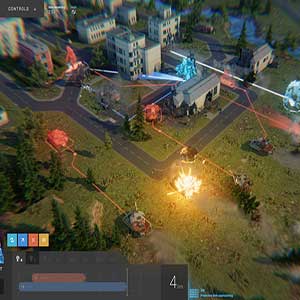

In order to streamline command relationships, as well as effect some modicum of tactical control, especially in regard to combined arms operations (i.e., those involving a coordination of infantry with cavalry and/or artillery forces), an intermediate level of command came into existence. As such a "field army" became larger, the number of subordinate commanders became unmanageable for the officer in general command of said army, usually a major general, to effectively command. Previously each regiment, battalion, cavalry squadron, or artillery battery operated somewhat independently, with its own field officer (i.e., colonel, lieutenant colonel, or major) or battery commander (usually a captain) reporting directly to the field force or "army" commander. The term’s origin is found in two French roots, which together meant roughly “those who fight.”. In England, it was first adopted when armies began to consist of formations larger than a single regiment. The word is first attested in the 15th century as a term for a larger military unit than the squadron or regiment. The term brigade first entered the English language, like most military terms, from the French language. The headquarters will usually have its own communications unit. On operations, additional specialist elements may be attached. The headquarters has a nucleus of staff officers and support (clerks, assistants and drivers) that can vary in size depending on the type of brigade. Some brigades may also have a deputy commander.

Until the late 20th century British and similar armies called the position 'brigade-major’ and most British brigades have a major as the chief of staff. The principal staff officer, usually a lieutenant colonel or colonel, may be designated chief of staff. The brigade commander has a self-contained headquarters and staff. In some armies, the commander is rated as a general officer. The Soviet Union, its forerunners and successors, mostly use "regiment" instead of brigade, and this was common in much of Europe until after World War II.Ī brigade's commander is commonly a major general, brigadier general, brigadier or colonel. However, in Switzerland and Austria, the numbers could start as high as 10,000 troops. The typical NATO standard brigade consists of approximately 5,000 troops. Some brigades are classified as independent or separate and operate independently from the traditional division structure. On operations, a brigade may comprise both organic elements and attached elements, including some temporarily attached for a specific task.īrigades may also be specialized and comprise battalions of a single branch, for example cavalry, mechanized, armored, artillery, air defence, aviation, engineers, signals or logistic. Historically, such brigades have sometimes been called brigade-groups. In addition to combat units, they may include combat support units or sub-units, such as artillery and engineers, and logistic units. Two or more brigades may constitute a division.īrigades formed into divisions are usually infantry or armored (sometimes referred to as combined arms brigades). It is roughly equivalent to an enlarged or reinforced regiment.
#Phantom brigade wiki plus
A brigade is a major tactical military formation that typically comprises three to six battalions plus supporting elements.


 0 kommentar(er)
0 kommentar(er)
